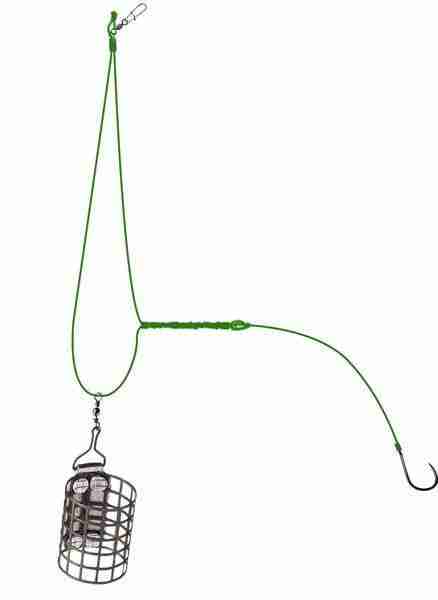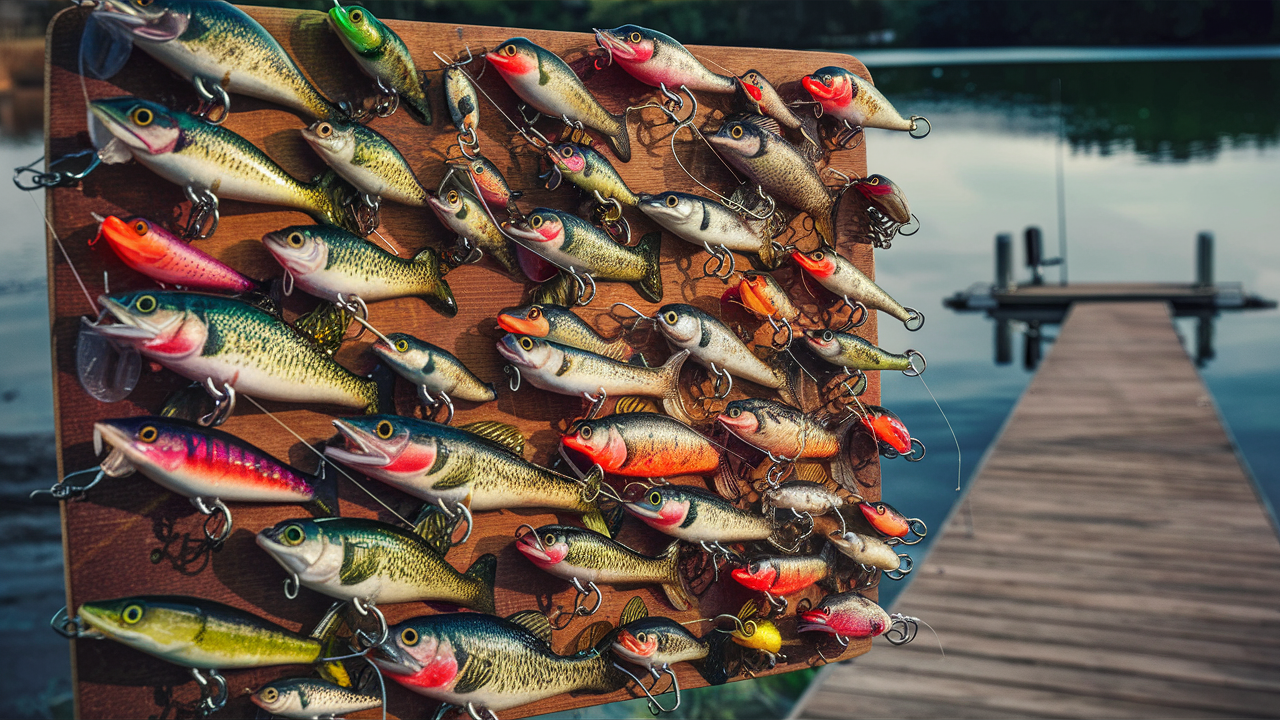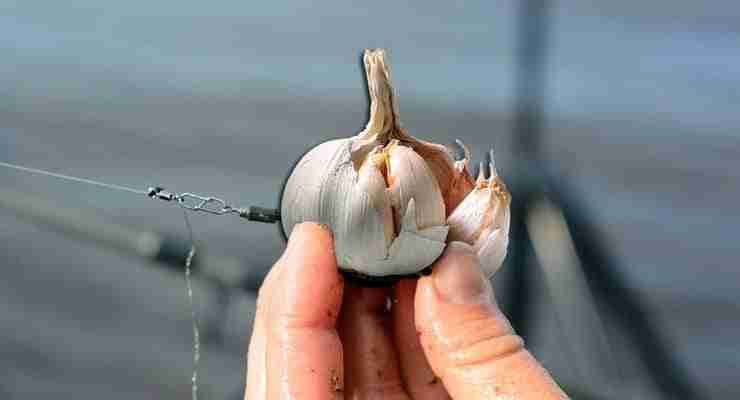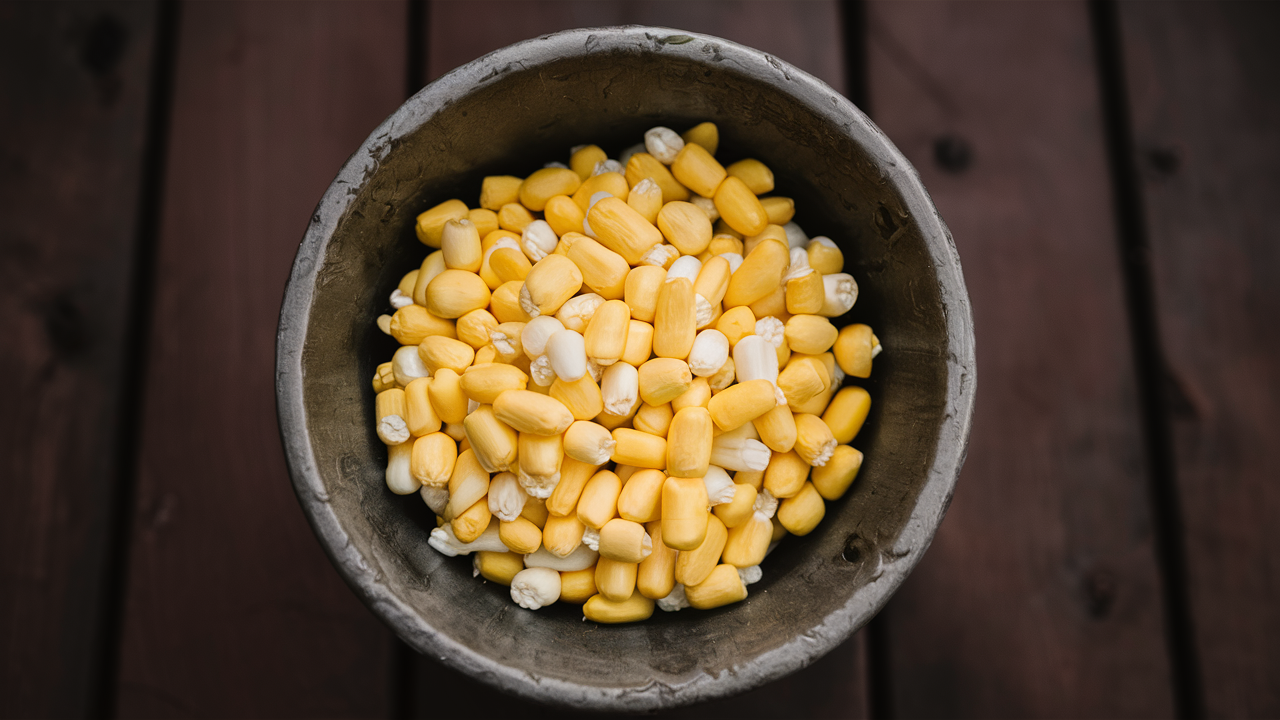
Corn for fishing: How to choose and cook it

9 min read
Corn for fishing, along with earthworms and maggots, is considered the most common nozzle for fishing on rivers and lakes.
Tasty, with a good smell and bright color, corn is not indifferent to most of the fish in our reservoirs. Its most important lovers are carp and crucian carp, but bream, roach, tench, chub, silver carp, silver bream, ram, and rudd are also not averse to eating this cereal. Even predatory fish are not indifferent to these bright grains.
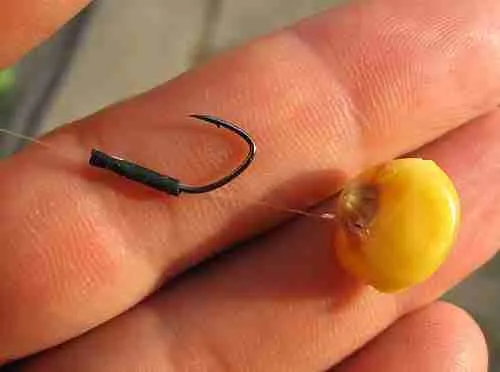
The most popular among anglers, due to its availability, is canned corn, but boiled mature grains and fresh milk corn are also widely used.
About corn as bait
Corn is a vegetable attachment with excellent characteristics:
- A wonderful smell, color, and taste that fish like so much;
- Always on sale in almost any store;
- Excellent hold on the hook and the hair;
- With it, you can use various flavors, which gives ample opportunities in feeding fish;
- When cooking grains, you can achieve varying degrees of softness;
- The low cost of such a nozzle.
When fishing on a feeder, you can classically use corn, putting it on a hook, as well as using hair mounting.
Corn grains are an excellent addition to the bait, which is filled in the feeder. Based on this cereal, various fishing nozzles and baits are produced. You can cook hominy for fishing from cornmeal.
The simplest most popular recipe: “ How to cook hominy for fishing ”, and without dirty dishes after cooking, we have already described on the pages of the site. Such a hominy can be used both as a nozzle on a hook and as a filler when fishing on a spring or on a “method” type feeder.
Which corn to choose as a fishing bait
If we talk about corn in grains, then there are such options:
- Self-brewed grains;
- canned grains;
- Young milk grains.
Let’s consider each type in more detail.
Boiled corn at home, recipe
Even though there is a wide selection of ready-made corn in ordinary stores and specialized fishing shops, many anglers continue to boil, soak and steam these grains themselves. And of course, this makes sense.
- Firstly, there is a category of anglers who like to fully control the process of preparing bait and bait and preparing for fishing long before the actual fishing.
- Secondly, many are not satisfied with the quality of canned grains, which are often chopped, squeezed, small or overcooked. And with self-cooking, you can give the grains the necessary hardness (softness) and add the most catchy concentrator or dye. In addition, before cooking, you can select large grains for a nozzle, and leave small ones for bait.
- Thirdly, when using corn for bait, for example, carp, you have to use not such a small amount. And if the lure of the place of fishing goes on for more than one day, then a bucket of boiled corn can go away calmly.
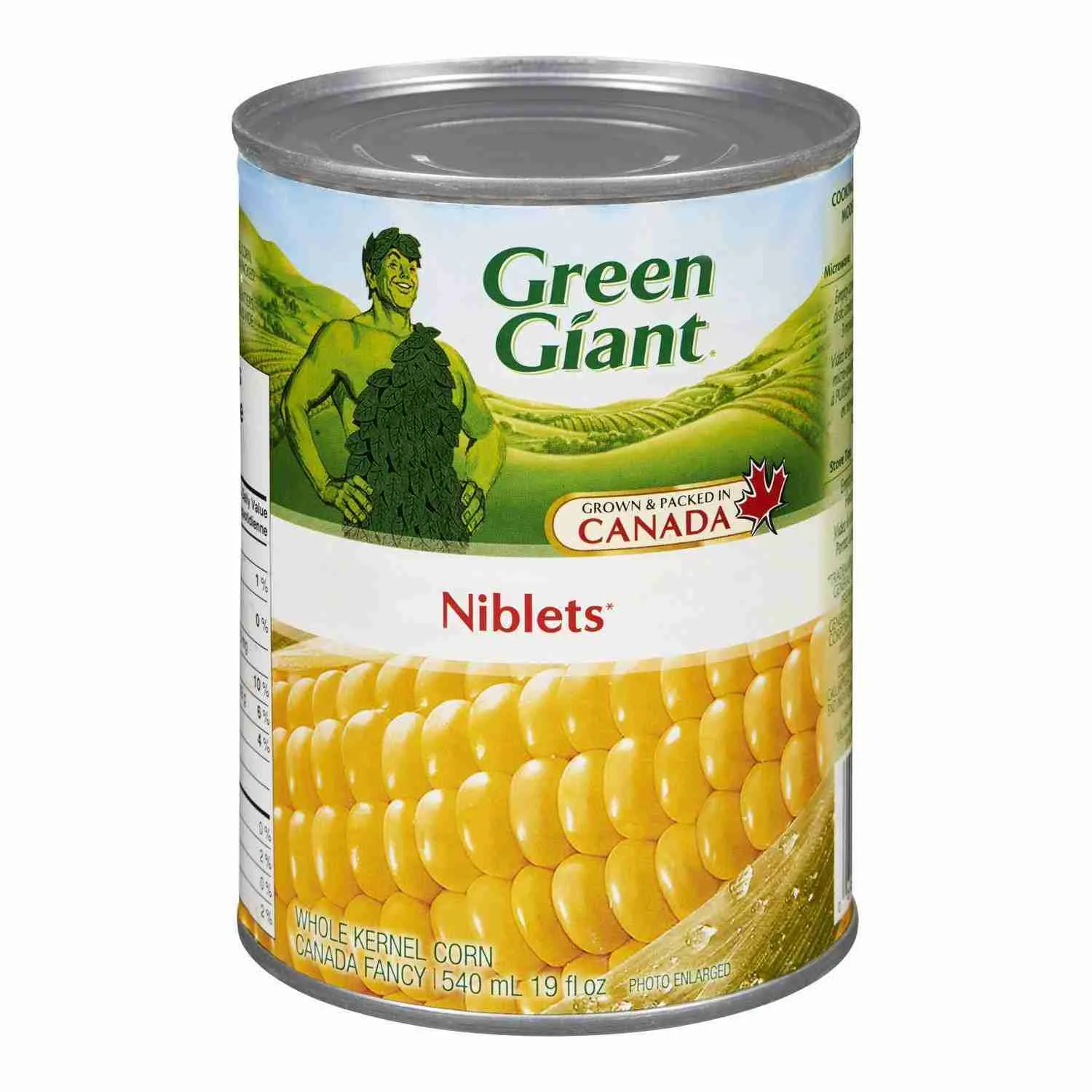
There are many cooking recipes. But the general principle is that before cooking, the grains must be soaked.
Such fermentation can take from one to three days. You can soak in plain water and hemp sourdough.
After the grains swell, the cooking process begins. To do this, it is better to use an enameled container or stainless steel. The water in which the corn is boiled can be sweetened with sugar or honey beforehand.
The cooking process lasts from 30 minutes to an hour. Our corn should be soft enough, but not overcooked. After that, leave it in the water for another 1-2 days.
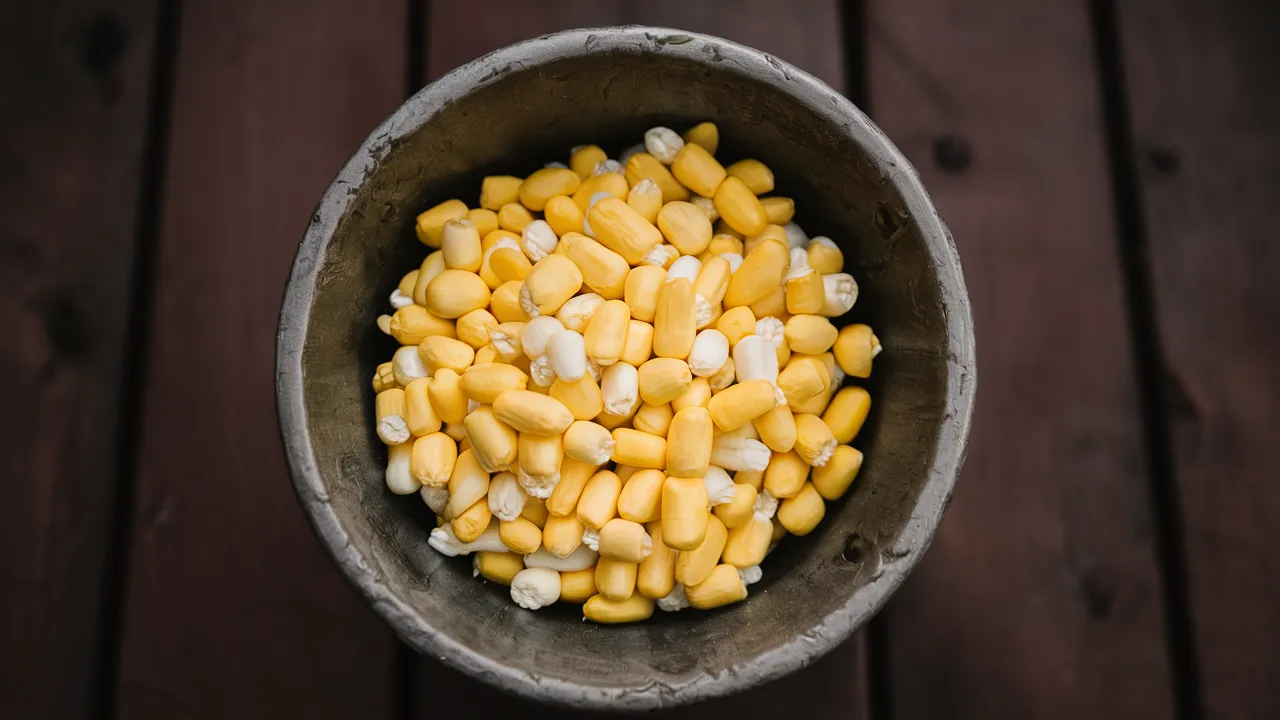
At this stage, you can add flavorings to the water. During this time, the grains will pick up the necessary flavor and become more attractive to fish.
When it comes to scents, it’s hard to give specific advice. Local tastes of fish and the time of year also play a role here.
The most popular scents are:
- Vanilla;
- Honey;
- Banana and other sweet flavors.
Short recipe:
- Soak the grains for 1-2 days;
- Water after soaking can be left or changed. Pour the mixture into a saucepan, sweeten or add flavoring and cook for 30-60 minutes until the desired softness is achieved.
- Turn off the fire and leave the corn in the water for another 1-2 days.
- Corn for fishing is ready.
Few anglers know that carp cannot break grain with their inner teeth. And his intestines are not able to digest the hard skin of cereals. There are even cases that when a carp ate raw, incompletely swollen grains, it died from a ruptured intestine. It was due to the fact that the nozzle “reached” already in his stomach and swelled - this led to a rupture of the intestine.
The process of infusion of corn grains brings them to full readiness. Lactic acid, which begins to form in such a sweet solution, softens the corn. It has been repeatedly observed that such a sour unpleasant odor for a fisherman is even liked by fish. Many people deliberately bring the grains to “sourness”, because they are sure that it is this flavor that will attract the fish more. But here the main thing is not to overdo it and rely more on your experience and instinct.
If the grains are boiled for a long time, this will lead to their boiling and turning into porridge. This type of porridge can be used to add bait. If the nozzles are welded too much and the infusion process has come to an end, then the grains can be frozen for storage until the next fishing.
Do I need the tip of the hook to stick out of the bait or the bait
Let’s touch on a little way to put corn on a hair or a hook.
“So hide the sting of the hook or not?” - Often asked by fishermen mastering feeder fishing. For them, we answer: no, it is not necessary.
The skin of corn is dense and for a better notch of the fish, it is good to leave the tip of the hook bare. And do not be afraid that the fish will prick on the sting of the hook and leave. Numerous experience of anglers has come down to the fact that the sting is brought out almost when using any nozzles and baits.
During fishing, the number and size of grains on the hook depends on the size of the hook itself and, accordingly, the size of the intended fish.
For example, when fishing for carp on a feeder on a hook with numbers from No. 4 to No. 8, up to 5-8 grains of the nozzle can fit. It is better to use different grains, both large and small, and they must also be planted unevenly, passing through the center or edge of the grain. Such a nozzle will look more natural and the fish will not cause suspicion.
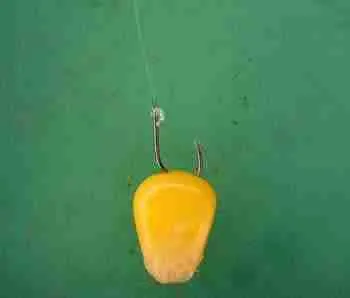
When fishing with a feeder for roach or silver bream, one grain is generally planted on the hook. Moreover, the bare tip of the hook can be made larger. Such a fish, with its sharp bites, often catches precisely on the lower part of the oral cavity. When catching small fish, the size of the hook decreases and, accordingly, the number of grains.
For example, when catching crucian carp, two grains of corn are planted , which can still be supported with boiled barley. This will hold the bait longer, as the crucian likes to savor the grains for a long time, sucking on them.
Also, a sandwich gives an excellent effect - a combination of corn with a worm or maggot:
If, after cooking, the grains are not soft enough and it is difficult to crochet them, then, in this case, hair installation can help. Corn on the hair for our ponds can be more productive than even catching boilies. A boilie-piercing needle can handle corn kernels with ease.
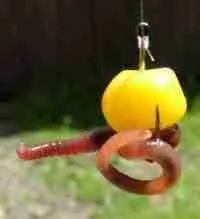
Canned corn for feeder fishing
In recent years, ready-made food corn in cans has received very wide popularity. The banks of the rivers, especially in the southern regions, are dotted with these tin signs of the presence of fishermen. What could be more convenient, a ready-made hook attachment is always at hand and is quite catchy.
As for food ordinary corn, which is sold in supermarkets, it is all different. And in size, and hardness, and integrity of the grains themselves. Here, the variety of corn used, and the technological process of preparation, and the age of the grains themselves before cooking, play.

Canned corn of the same company, bought yesterday and a week ago, can differ significantly, because it is intended for food and the manufacturer cares first of all about its taste than about using it on a fishing hook.
Canned corn from some manufacturers is generally unpalatable, tough, and unpleasant for humans, not to mention its ability to attract fish.
In fishing stores, you can find a special jar culture for the bait. It already comes with a certain aroma and color.
In such jars, whole grains are of the same size and are convenient to use.
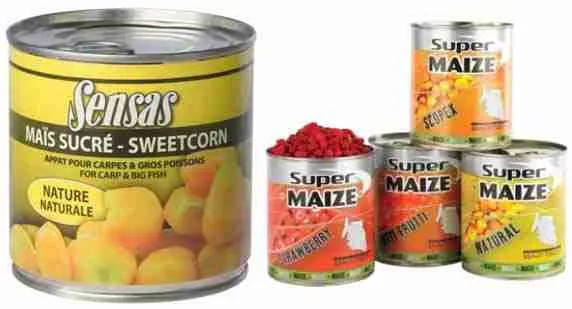
It includes additional components that prevent the rapid disappearance of the product. Some anglers try to use only such a nozzle.
As practice shows, there is no big difference in bite between this special corn, canned food or cooked at home.
Of the edible canned corn, Bonduelle is the most popular. This corn fishes well and the degree of softness is very suitable for use as bait.

Party from the party can differ significantly. Sometimes, to find a suitable whole grain for a nozzle, you have to go through half the can. There is a large percentage of cut grains. Despite this, a pleasant smell and a sweetish aftertaste do their job perfectly when fishing.
There is a not unreasonable opinion that Bonduelle in glass jars is better in terms of quality than in tins and is more suitable as a nozzle.
You can add the necessary flavoring to the jar nozzle. In summer, more berry, sweet flavors are used (strawberry, banana, vanilla), and in autumn it is advisable to switch to the smell characteristic of baits (shrimp, caviar, crayfish)
For example, a good effect is obtained if you pour a bag of vanilla sugar into a jar. Or, before casting, lower the grains into an attractant with a certain smell. But this is a matter of taste and experience.
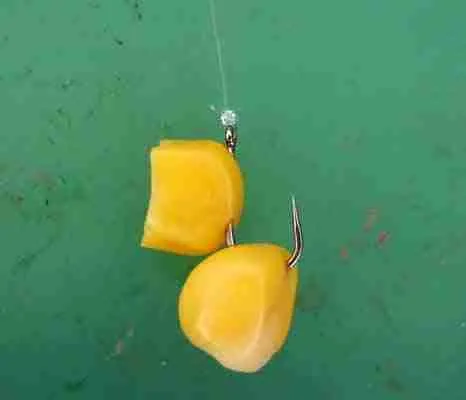
Canned corn can be used to add to bait during feeder fishing. Several grains are added to the finished bait for the feeder. Scattering along the bottom, it will force the fish that have sailed to linger in place.
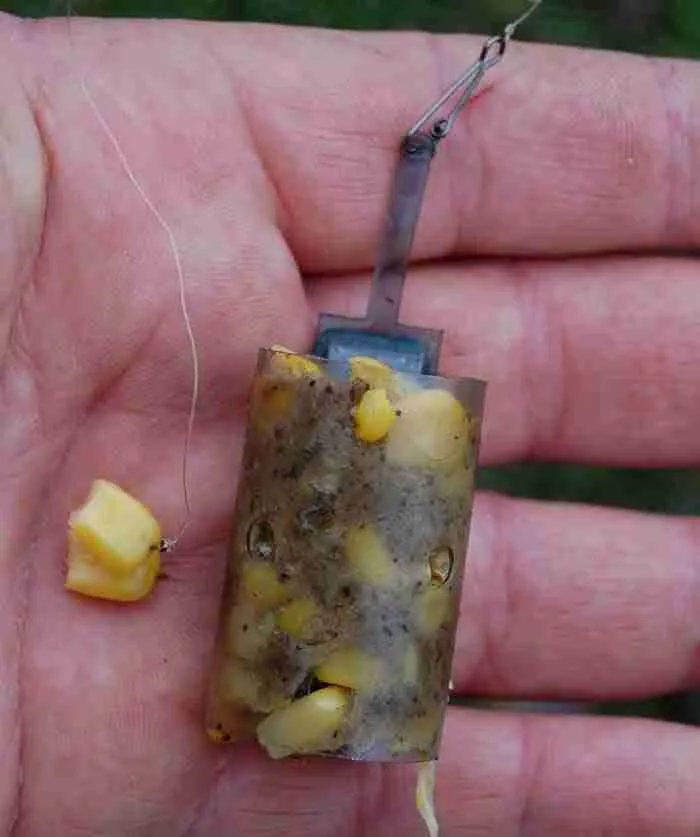
Do not forget that the syrup from the jar has a great smell and taste. It can also be added to bait.
The nozzle from canned corn is made in the same way as in the previous case with boiled corn. You can put it on the hair and the hook. Also, while fishing, you can and should experiment with “sandwiches”, adding a worm or larvae to the nozzle.
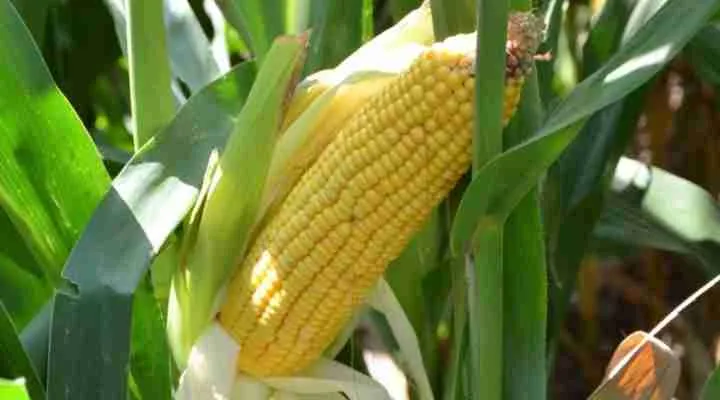
When the first mature raw young corn appears, this is the time to use it for fishing in its raw form. Large, whole, soft still dairy grains are selected.
